Design of Reflective Polarization Rotator in Silicon Waveguide
Abstract
1. Introduction
2. Reflective Polarization Rotator in a Silicon Waveguide
3. Polarization Rotator Formed by the Stack of Birefringent Waveplates with Isotropic Background
4. Discussion
5. Conclusions
Author Contributions
Funding
Data Availability Statement
Acknowledgments
Conflicts of Interest
References
- Hameed, M.F.O.; Hussain, F.F.K.; Obayya, S.S.A. Ultracompact Polarization Rotator Based on Liquid Crystal Channel on Silicon. J. Light. Technol. 2017, 35, 2190–2199. [Google Scholar] [CrossRef]
- Yu, Z.; Xu, H.; Liu, D.; Li, H.; Shi, Y.; Dai, D. Subwavelength-Structure-Assisted Ultracompact Polarization-Handling Components on Silicon. J. Light. Technol. 2022, 40, 1784–1801. [Google Scholar] [CrossRef]
- Liu, M.; Zhang, Y.; Wang, X.; Jin, C. Incident-angle-insensitive and polarization independent polarization rotator. Opt. Express 2010, 18, 11990–12001. [Google Scholar] [CrossRef]
- Han, I.; Kim, B.Y. Wavelength independent all-fiber angle-tunable polarization rotator based on geometric effects. Opt. Express 2016, 24, 19366–19371. [Google Scholar] [CrossRef] [PubMed]
- An, S.; Kwon, O.K. Integrated InP polarization rotator using the plasmonic effect. Opt. Express 2018, 26, 1305–1314. [Google Scholar] [CrossRef] [PubMed]
- Pintus, P.; Huang, D.; Morton, P.A.; Shoji, Y.; Mizumoto, T.; Bowers, J.E. Broadband TE Optical Isolators and Circulators in Silicon Photonics Through Ce:YIG Bonding. J. Light. Technol. 2019, 37, 1463–1473. [Google Scholar] [CrossRef]
- Firby, C.J.; Chang, P.; Helmy, A.S.; Elezzabi, A.Y. Versatile broadband polarization-independent optical circulators for nanophotonic integrated circuits. J. Opt. Soc. Am. B 2018, 35, 1504–1513. [Google Scholar] [CrossRef]
- Cerveny, M.; Ford, K.L.; Tennant, A. Reflective Switchable Polarization Rotator Based on Metasurface With PIN Diodes. IEEE Trans. Antennas Propag. 2021, 69, 1483–1492. [Google Scholar] [CrossRef]
- Song, K.; Liu, Y.; Fu, Q.; Zhao, X.; Luo, C.; Zhu, W. 90° polarization rotator with rotation angle independent of substrate permittivity and incident angles using a composite chiral metamaterial. Opt. Express 2013, 21, 7439–7446. [Google Scholar] [CrossRef]
- Zhu, L.; Zhao, X.; Miao, F.J.; Ghosh, B.K.; Dong, L.; Tao, B.R.; Meng, F.Y.; Li, W.N. Dual-band polarization convertor based on electromagnetically induced transparency (EIT) effect in all-dielectric metamaterial. Opt. Express 2019, 27, 12163–12170. [Google Scholar] [CrossRef]
- Xu, J.; Li, R.; Qin, J.; Wang, S.; Han, T. Ultra-broadband wide-angle linear polarization converter based on H-shaped metasurface. Opt. Express 2018, 26, 20913–20919. [Google Scholar] [CrossRef] [PubMed]
- Jia, Y.; Liu, Y.; Zhang, W.; Wang, J.; Wang, Y.; Gong, S.; Liao, G. Ultra-wideband metasurface with linear-to-circular polarization conversion of an electromagnetic wave. Opt. Mater. Express 2018, 8, 597–604. [Google Scholar] [CrossRef]
- Kamal, B.; Chen, J.; Yingzeng, Y.; Ren, J.; Ullah, S.; Khan, W.U.R. High efficiency and ultra-wideband polarization converter based on an L-shaped metasurface. Opt. Mater. Express 2021, 11, 1343–1352. [Google Scholar] [CrossRef]
- Guo, L.; Li, S.; Jiang, X.; Peng, L.; Li, X. Ultra-wideband polarization rotation reflective metasurface based on monolayer rhombus hollow structure. AIP Adv. 2018, 8, 095205. [Google Scholar] [CrossRef]
- Wen, X.; Zheng, J. Broadband THz reflective polarization rotator by multiple plasmon resonances. Opt. Express 2014, 22, 28292–28300. [Google Scholar] [CrossRef] [PubMed]
- Keppler, S.; Hornung, M.; Bödefeld, R.; Kahle, M.; Hein, J.; Kaluza, M.C. All-reflective, highly accurate polarization rotator for high-power short-pulse laser systems. Opt. Express 2012, 20, 20742–20747. [Google Scholar] [CrossRef]
- Okayama, H.; Onawa, Y.; Shimura, D.; Yaegashi, H.; Sasaki, H. Polarization rotation Bragg grating using Si wire waveguide with non-vertical sidewall. Opt. Express 2014, 22, 31371–31378. [Google Scholar] [CrossRef]
- Chen, C.C. Design of ultra-short polarization convertor with enhanced birefringence by photonic crystals. Results Phys. 2021, 24, 104138. [Google Scholar] [CrossRef]
- Hsiao, F.-L.; Ni, C.-Y.; Tsai, Y.-P.; Chiang, T.-W.; Yang, Y.-T.; Fan, C.-J.; Chang, H.-M.; Chen, C.-C.; Lee, H.-F.; Lin, B.-S.; et al. Design of Waveguide Polarization Convertor Based on Asymmetric 1D Photonic Crystals. Nanomaterials 2022, 12, 2454. [Google Scholar] [CrossRef]
- Kim, S.-H.; Takei, R.; Shoji, Y.; Mizumoto, T. Single-trench waveguide TE-TM mode converter. Opt. Express 2009, 17, 11267–11273. [Google Scholar] [CrossRef]
- Holmes, B.M.; Hutchings, D.C. Realization of novel low-loss monolithically integrated passive waveguide mode converters. IEEE Photonics Technol. Lett. 2006, 18, 43–45. [Google Scholar] [CrossRef]
- Leung, D.M.H.; Rahman, B.M.A.; Grattan, K.T.V. Numerical Analysis of Asymmetric Silicon Nanowire Waveguide as Compact Polarization Rotator. IEEE Photonics J. 2011, 3, 381–389. [Google Scholar] [CrossRef]
- Wakabayashi, Y.; Hashimoto, T.; Yamauchi, J.; Nakano, H. Short Waveguide Polarization Converter Operating Over a Wide Wavelength Range. J. Light. Technol. 2013, 31, 1544–1550. [Google Scholar] [CrossRef]
- Yeh, P. Electromagnetic propagation in birefringent layered media. J. Opt. Soc. Am. 1979, 69, 742–756. [Google Scholar] [CrossRef]
- Abdulhalim, I. Omnidirectional reflection from anisotropic periodic dielectric stack. Opt. Commun. 2000, 174, 43–50. [Google Scholar] [CrossRef]
- Abdulhalim, I. Reflective polarization conversion Fabry–Pérot resonator using omnidirectional mirror of periodic anisotropic stack. Opt. Commun. 2003, 215, 225–230. [Google Scholar] [CrossRef]
- Lo, S.S.; Wang, M.S.; Chen, C.C. Semiconductor hollow optical waveguides formed by omni-directional reflectors. Opt. Express 2004, 12, 6589–6593. [Google Scholar] [CrossRef]
- Lo, S.-S.; Chen, C.-C. Air-core hollow optical waveguides with omnidirectional reflectors. Opt. Eng. 2006, 45, 044601. [Google Scholar] [CrossRef]
- Lo, S.S.; Chen, C.C. 1 × 2 Multimode interference couplers based on semiconductor hollow waveguides formed from omnidirectional reflectors. Opt. Lett. 2007, 32, 1803–1805. [Google Scholar] [CrossRef]
- Chiu, H.-K.; Hsu, C.-M.; Lo, S.-S.; Chen, C.-C.; Lee, C.-C. Sharply bent hollow optical waveguides formed by an omni-directional reflector. J. Phys. D Appl. Phys. 2009, 42, 195106. [Google Scholar] [CrossRef]
- Okamoto, K. Fundamentals of Optical Waveguides; Elsevier: Amsterdam, The Netherlands, 2006. [Google Scholar]
- Marcuse, D. Theory of Dielectric Optical Waveguides; Academic Press: Cambridge, MA, USA, 1974. [Google Scholar]
- Yeh, P. Transmission spectrum of a Solc filter. Opt. Commun. 1979, 29, 1–6. [Google Scholar] [CrossRef]
- Yeh, P. Optics of anisotropic layered media: A new 4 × 4 matrix algebra. Surf. Sci. 1980, 96, 41–53. [Google Scholar] [CrossRef]
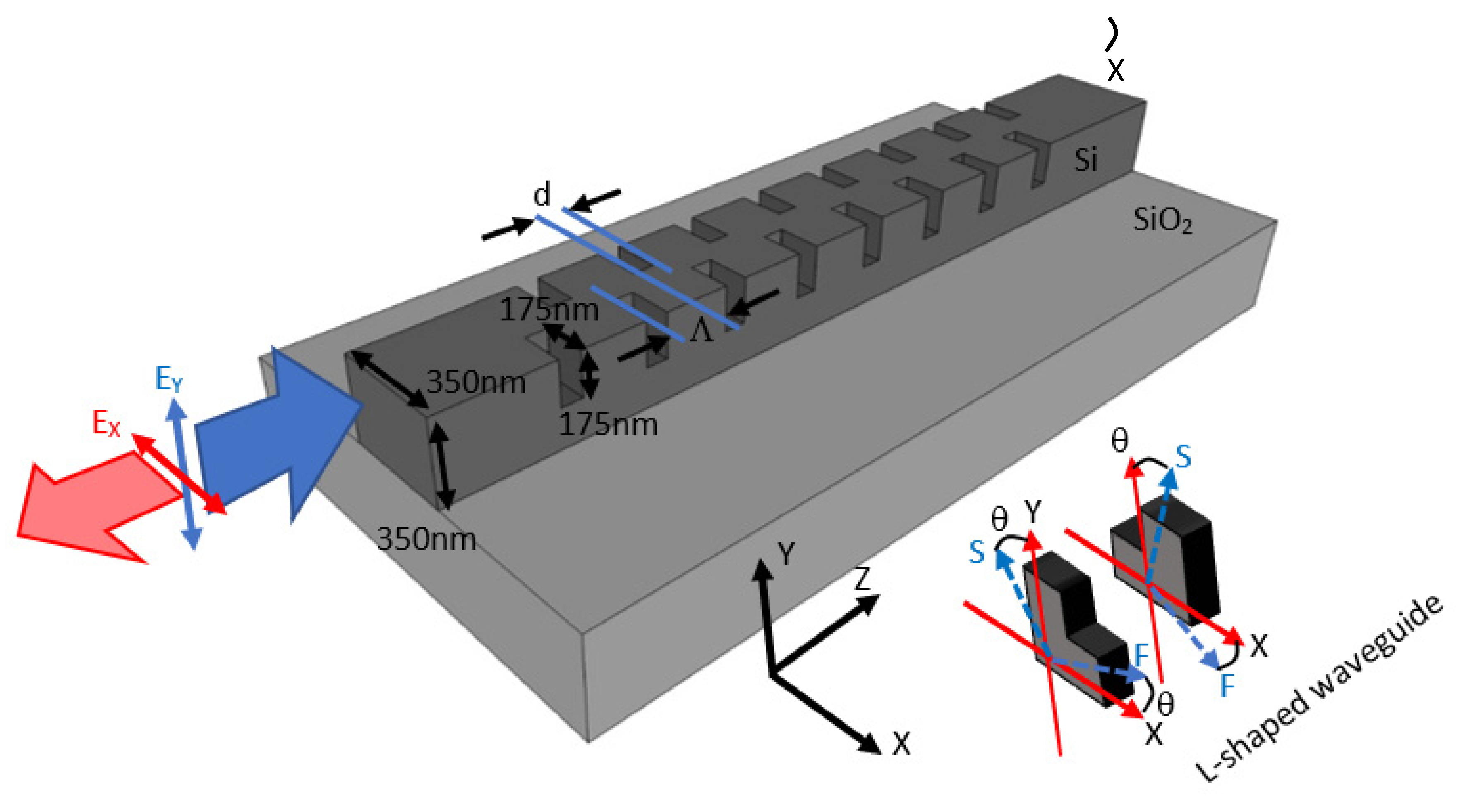
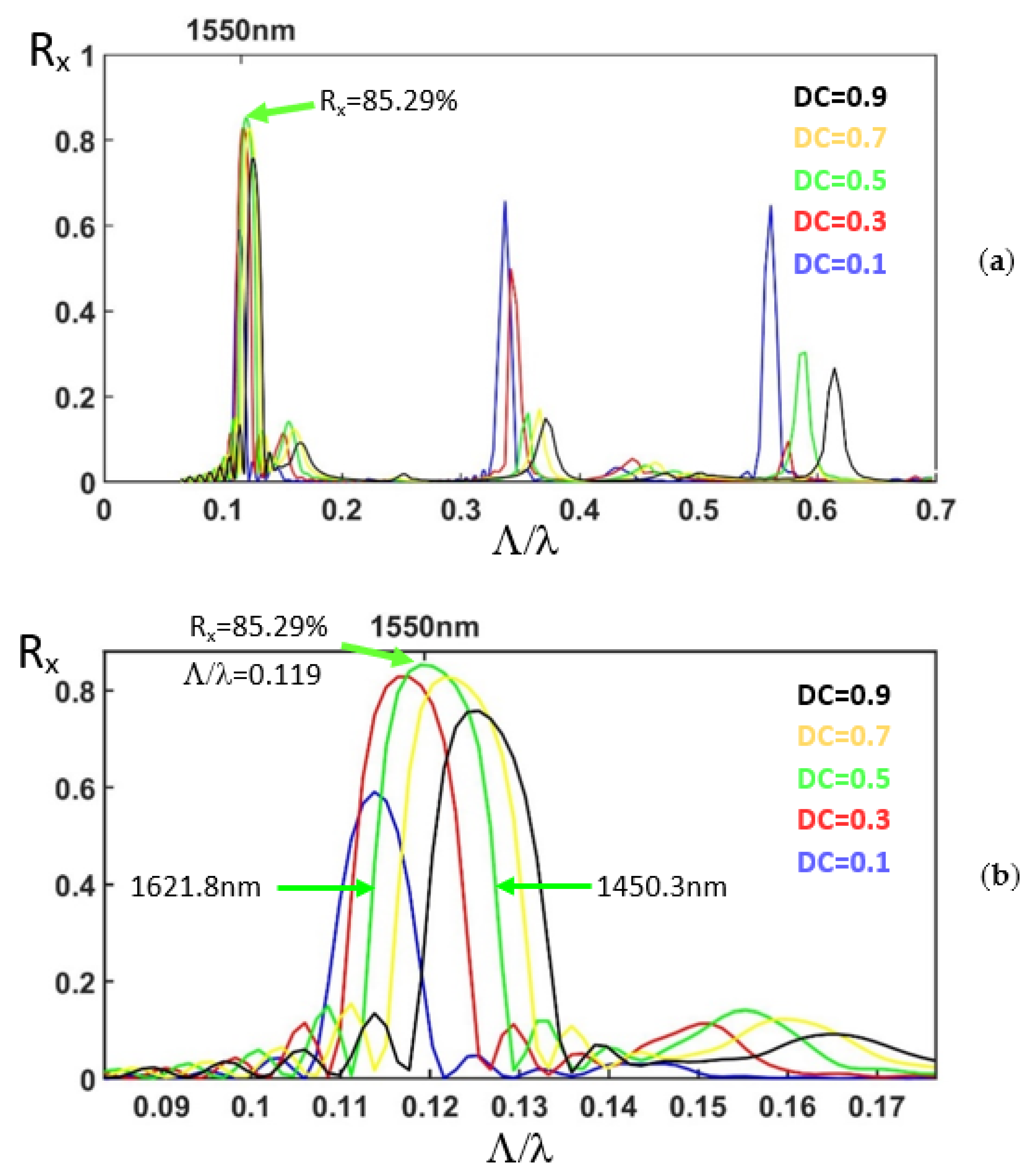
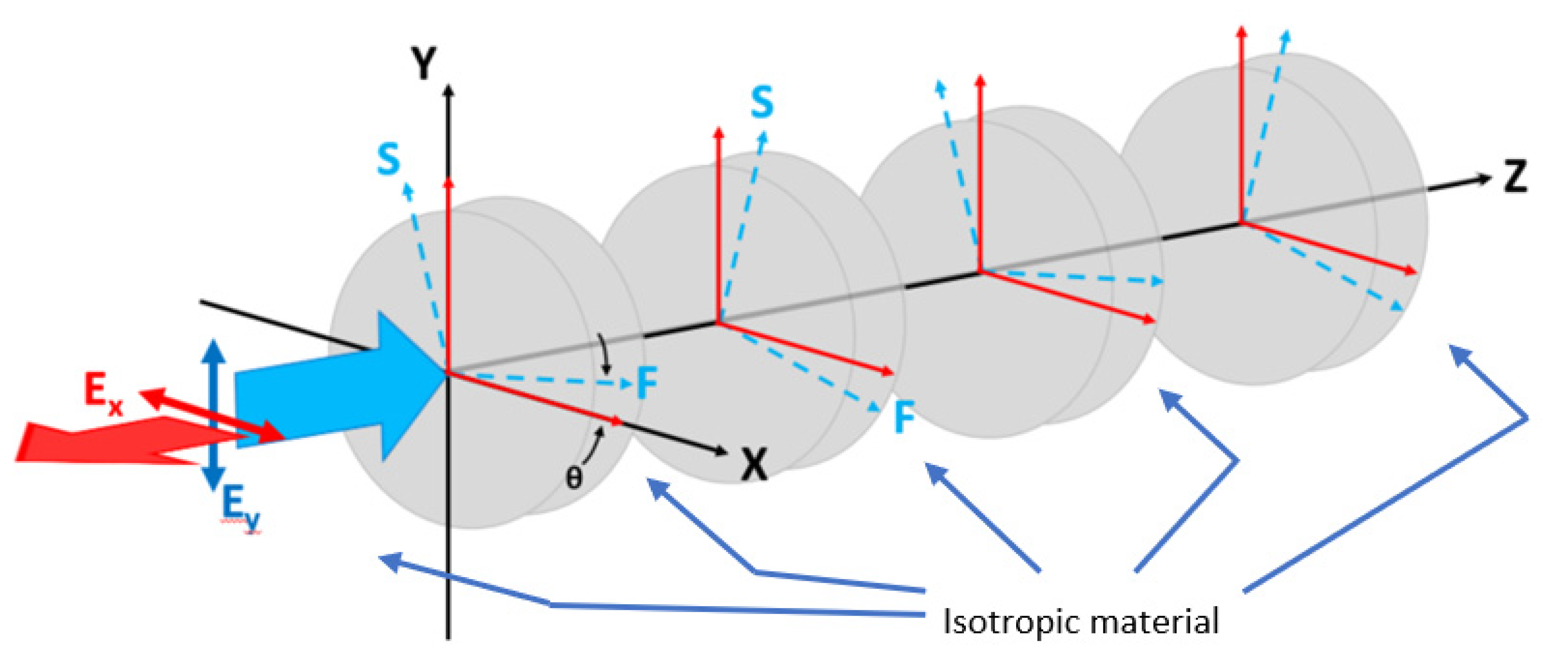
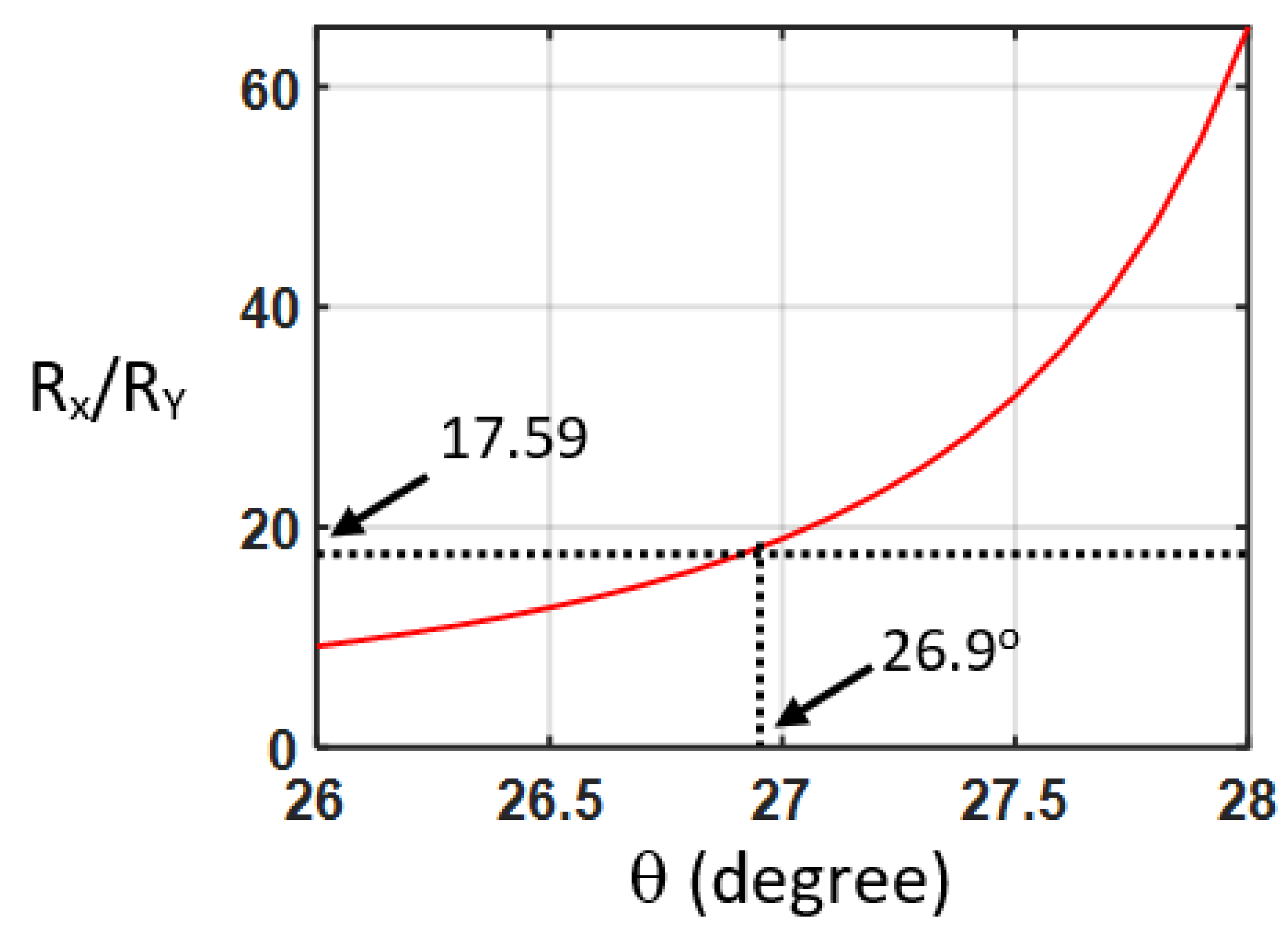
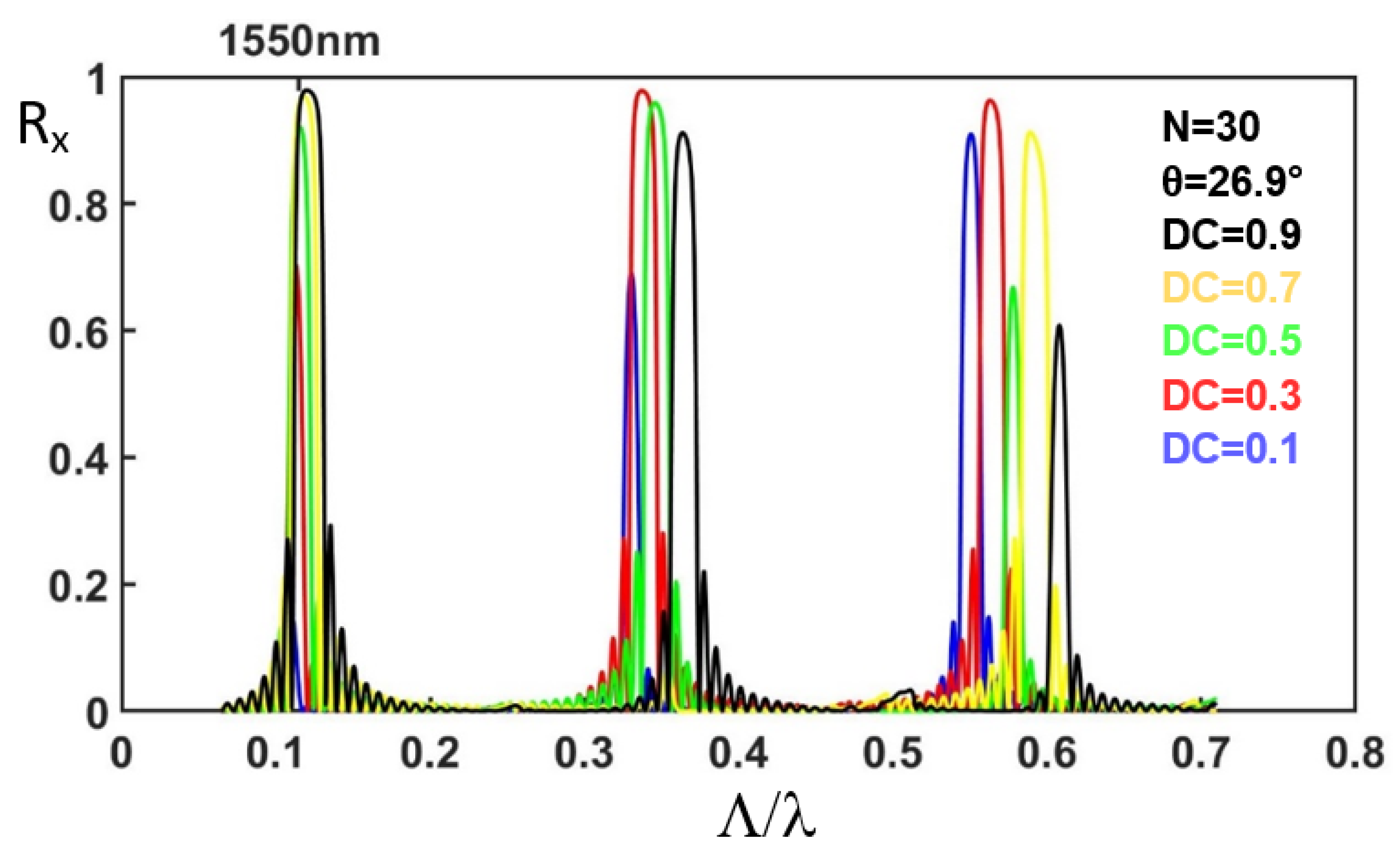
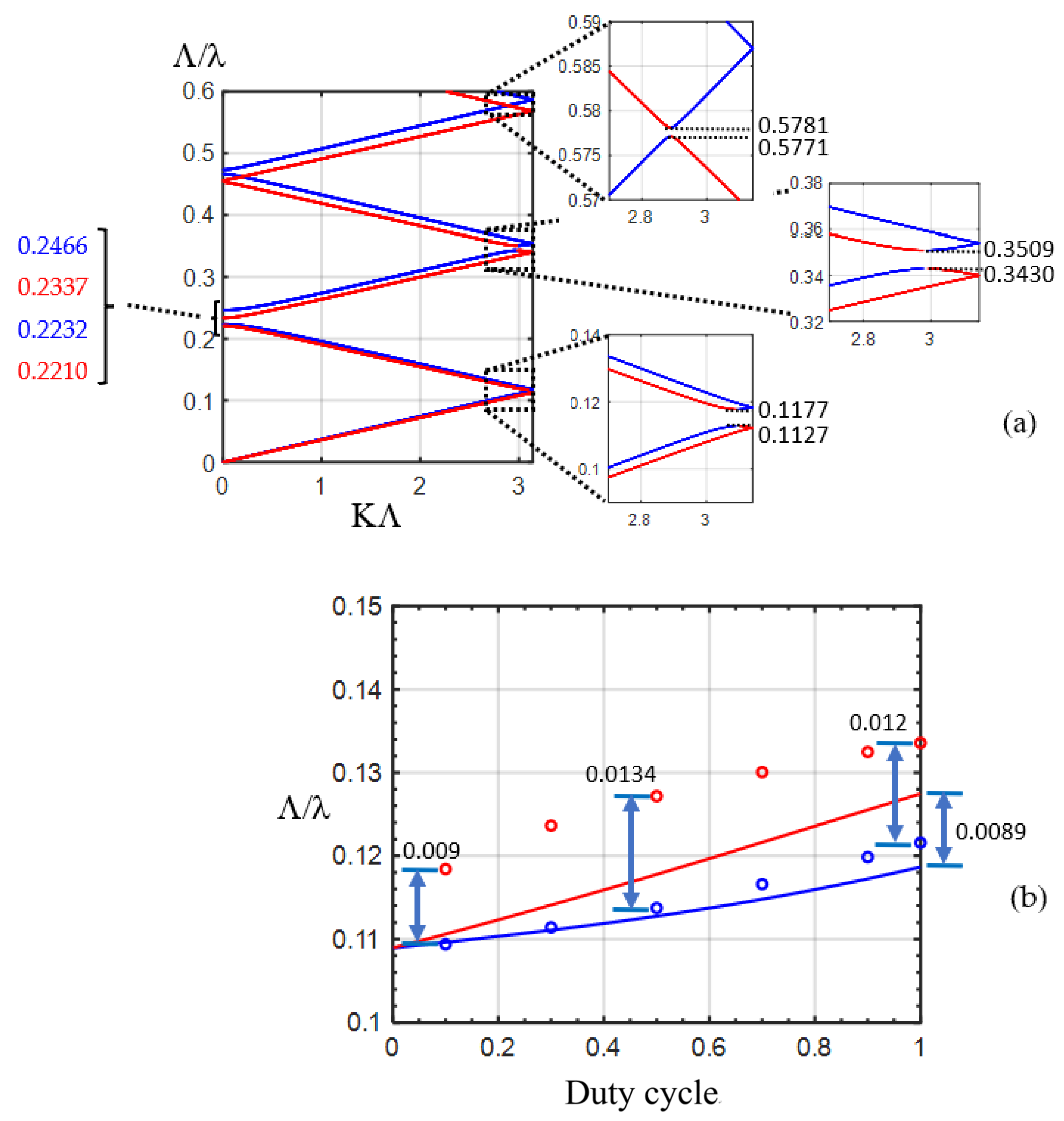
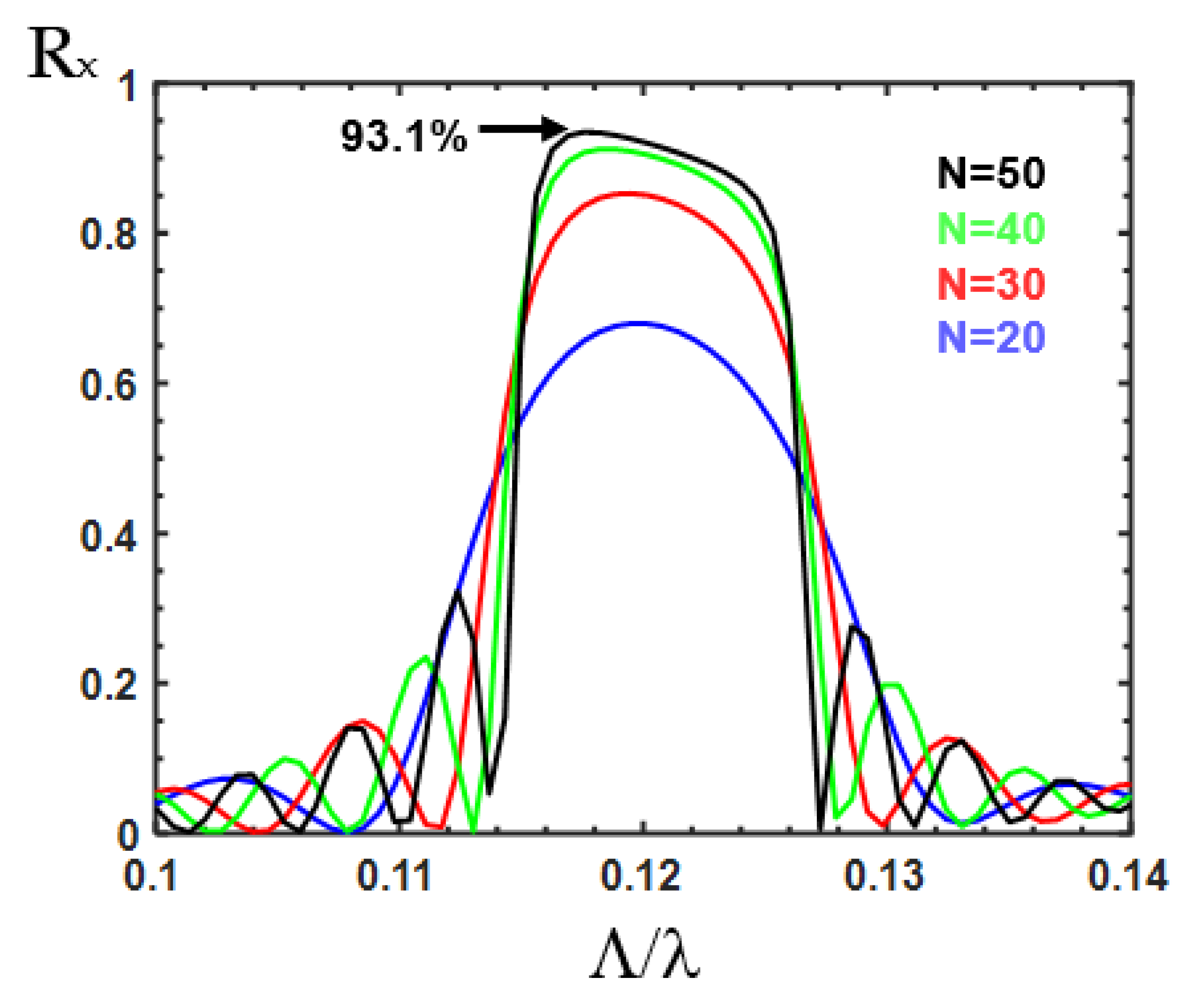
Publisher’s Note: MDPI stays neutral with regard to jurisdictional claims in published maps and institutional affiliations. |
© 2022 by the authors. Licensee MDPI, Basel, Switzerland. This article is an open access article distributed under the terms and conditions of the Creative Commons Attribution (CC BY) license (https://creativecommons.org/licenses/by/4.0/).
Share and Cite
Liu, L.-Y.; Huang, H.-C.; Chen, C.-W.; Hsiao, F.-L.; Cheng, Y.-C.; Chen, C.-C. Design of Reflective Polarization Rotator in Silicon Waveguide. Nanomaterials 2022, 12, 3694. https://doi.org/10.3390/nano12203694
Liu L-Y, Huang H-C, Chen C-W, Hsiao F-L, Cheng Y-C, Chen C-C. Design of Reflective Polarization Rotator in Silicon Waveguide. Nanomaterials. 2022; 12(20):3694. https://doi.org/10.3390/nano12203694
Chicago/Turabian StyleLiu, Li-Ying, Hong-Chang Huang, Chu-Wen Chen, Fu-Li Hsiao, Yu-Chieh Cheng, and Chii-Chang Chen. 2022. "Design of Reflective Polarization Rotator in Silicon Waveguide" Nanomaterials 12, no. 20: 3694. https://doi.org/10.3390/nano12203694
APA StyleLiu, L.-Y., Huang, H.-C., Chen, C.-W., Hsiao, F.-L., Cheng, Y.-C., & Chen, C.-C. (2022). Design of Reflective Polarization Rotator in Silicon Waveguide. Nanomaterials, 12(20), 3694. https://doi.org/10.3390/nano12203694







